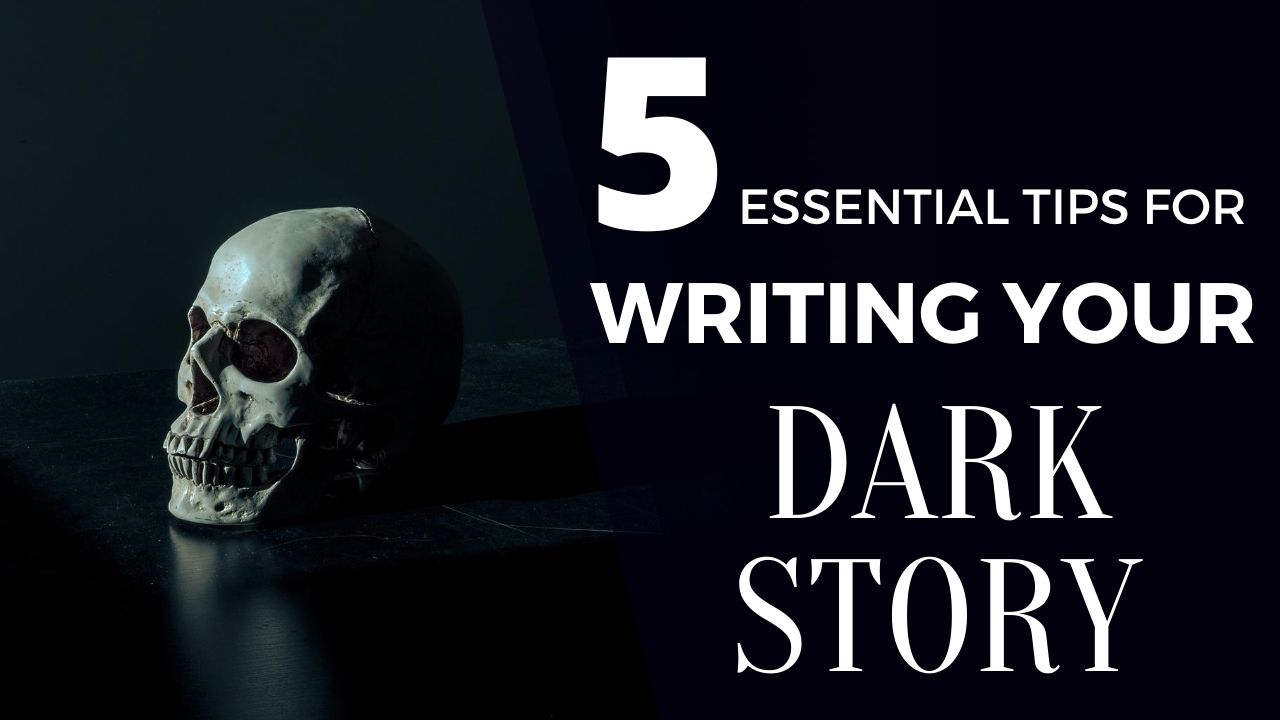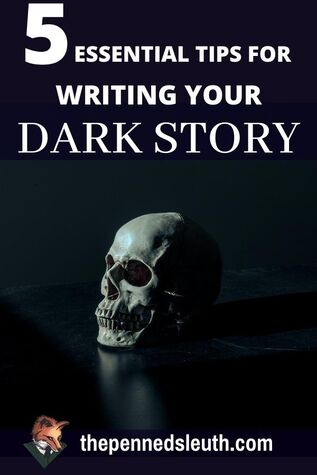Latest Writing Video! |
|
Telling a terrifying tale presents its own set of challenges. You are charged to evoke fear of readers, who are notorious for expecting just about everything with their infernal imagination. You need to use unpredictability, believability and subversion of expectations not to make them laugh, but to make them shudder. To make a spike of a fear jolt through their spines with the story you have to tell them. Here’s how you make them tremble like a leaf! The Subtle Scare to Shake Their SoulOften enough, the novice writer will call upon the usual to evoke disgust and fear. Usually, this is gore. Blood serves a purpose, but it is not the root of fear. You will find that blood does not scare your audience, only the very squeamish, but that is not a big target market. Your reader is in search of an investing story, one they can place themselves in and feel the fear. The root of fear is merely a threat to oneself. Death evokes as much, but that is merely a morbid reminder, not a scare. What scares the reader is the cause. Take Edgar Allan Poe’s, ‘The Pit and the Pendulum’. In this story, one is restricted by bonds in a pit, surrounded by darkness. The character is subjected to terrible torture, not one of pain, but of expectation. A pendulum blade, heavy, sharp and cruel, sways above his middle, with each swing descending a little more. It fills the victim with intense fear, but after so many sways, the victim feels that the wait is worse than the blade actually connecting. That is the position you need to place your characters. Subtle scares through placing a character in a terrifying position, one that many can relate to and empathise with. In addition, it helps to evoke fear of the unknown. Which comes recommended by one of the founding fathers of horror literature, H. P. Lovecraft. Don’t show the threat so clearly. Shadows in the night, monsters looming unseen, but definitely there. That is what will grip your reader with fear, not the monster itself. Use these techniques. Have them constantly expecting the worst. Throw them in a house, alone, unarmed, at night and shake the front door. Have them hold the door with adrenaline-fueled effort, never knowing what is on the other side of the door, but not wishing to find out either. Reason to Madness, Purpose Behind the PerilMaking a story dark is one thing, but if there is no reason behind it, there is less reason to find it believable. You can write a scary story set in any time, in any world. You can make a terrifying science-fiction or medieval fantasy, but if you are going to write about monsters, curses and aliens, there needs to be some backing to them. If a reader sees that there is no reason behind a threat other than to scare the character, then the impact is less than it could have been. In a world riddled with corruption and vile magic, you need a cruel wizard, a darker, unstoppable power. Monsters for monster’s sake is not scary. It is nonsensical, which is to say it is not a bad thing, but it is not scary. It is made a lot scarier knowing just how much of a threat they are, how slim one's chances are of avoiding them, let alone overcoming them. When writing an intruder in a home, they need to be breaking in for a reason. When writing a monster, it needs to be after your character for a reason. When writing a serial killer, there has to be a reason why your character is next on their list. It becomes a whole lot more difficult to scare a reader now, but certainly a lot more terrifying. Taking that scenario from the previous point, your character grows a lot more worried for their person when they find out that leaving the house does not guarantee their safety. Especially when the thing that’s trying to get in is after the character, not the contents of the house. Broken Characters, Twisted VillainsNow, let’s talk about the pieces at play. You have your characters, protagonists and side characters, who each play their parts in the story. Yet, what makes these characters more fitting in a dark story, is their personality, background and motives. Often, realistic characters make for far better reading than the typical hero. If you placed Superman in a house, alone at night, with a terrible threat outside the door, he would not be barricading the door. He would open it. That should tell you that courage and bravery is one thing, but nobody should be a Superhero. You are working with mortals, real people that have their faults and their strengths. These characters need to be placed in situations where they struggle to survive, if at all. These characters need to have an Achilles Heel, one which places them in a dire situation. If they have a strength, it must be just out of reach, to add to the tension. Take the home-alone scenario once more. Your character is holding the door, just keeping what is on the other side at bay, but they don’t feel the threat is quitting and slowly they grow more tired. On the other side of the room is a weapon, a fire-poker, or a kitchen knife or even a shotgun of all things. Yet, they know if they abandon the door, the threat will break-in. Does the character take the chance and make a rush for the weapon? Do they even know if it will be enough to combat the threat? In addition to basic strengths and acts of courage, the character might have other issues. Unresolved mental trauma, fear paralyzes them, they are afraid of the dark or they are the ones who placed themself in such a situation. Broken characters are the ones who have the least chance of making it, which only serves to add to the terror one feels. The hopelessness of the situation. If the character is likeable despite all this, as well as relatable, the reader feels even more fear for them. Now, giving all this attention to your protagonist is great, but one must consider the antagonist as well. Is it a monster? What’s its purpose? Is it an unknown killer? Why are they after our protagonist? Did the protagonist witness their crime? Did the protagonist wrong the killer? Does the protagonist know the killer? Was the killer a friend? Was the killer in front of the reader the whole time? Your villain is bound to be a broken individual or surely a twisted one. One who is cruel and dangerous, the perfect combination for a dark story! The Question-Raising EndingNot all endings will be so final. Not all endings will end with everyone six-feet under. Not all endings will be so grim. Not all endings will be so happy. Not all endings will be an end. Often in this genre of writing, be it horror or thriller, the ending isn’t as good as one would expect. In fact, the endings for most thrillers end up being absolute rubbish. Even icons in the genre, such as Stephen King, are notorious for writing awful endings that don’t serve a book justice. That is not to say you can’t end a story well, but it is difficult. You can try to wrap up the stories with many loose-ends or leave a few important ones waving in the wind. You can kill off your main protagonist, either surprisingly killed by the antagonist or they simply sacrifice themself to stop the antagonist. You can write a dream ending, where the hero wins on all fronts. Or perhaps, you end the story with a hollow victory, where nobody is sure the antagonist is defeated. Many dark stories end this way. You should be able to decide which of these endings best suits your novel. In most respects, a thriller should end well-enough. Be it the protagonist wins and lives, or wins and dies. Yet, one thing is for sure, the villain has been stopped. It can be a sad ending, where there is no real win for the characters the reader enjoys, or it can be a happy one, where all is well. Although, the protagonist might be traumatised. You may already have a good idea for the ending, but I would personally suggest leaving some questions unanswered. If you wrap it up neatly, then it softens the story, as it excludes the reader in some respects. Yet, if you leave a question unanswered, especially one of great interest, it will stay in the reader's mind, maintaining their inclusion in the story, as much as a reader can be included. The Power Of BelievabilityFinally, we have the power of believability. In order to make a threat more terrifying for the reader, you need to write more believably. Now, this does not mean realistically. I am not saying you won’t scare the reader with a story based in science fiction or in fantasy. You can write about monsters and magic and still scare your reader, but you will need to ground these threats and wonders to make them more believable. In essence, a monster that can be killed is scarier than a monster that cannot. If your story reaches a point where the reader detaches themself from the world, as they can no longer relate, then the story loses the power it has over them. The way you ground your supernatural threats is through restrictions. An omnipotent evil is not scary, it merely is. Take the home-alone scenario once more. Here are two scenarios to continue the scene. One, the threat has broken in, the protagonist is armed. Yet, the threat is unstoppable, immune to harm. In short, the protagonist is doomed, unable to escape or defend themselves. The second scenario, the threat has entered, the protagonist dashes towards the nearest weapon, while the threat is just behind them. If the protagonist reaches the weapon, they have a slim chance, but a chance nonetheless, of defeating the threat. If they don’t reach the weapon, they are at the mercy of the villain and they must fight with their bare hands. Now, even though the threat is mortal, it is far scarier than the unstoppable monster. The threat is grounded by this restriction, more believable. It can be a werewolf that broke the door down, a vampire, a ghoul, or a demon, but knowing it can be defeated helps place the reader in the protagonist's shoes. That is the power of believability. ConclusionI have found thriller writing one of the most interesting genres in my career. Call it morbid curiosity, or simply dark thinking, but I find exploring what one finds scary is truly fascinating. You learn more about yourself, how fear works and as a result, how to write it. Taking Lovecraft’s lesson on fear, I have found that fear of the unknown is important to keep in mind when writing about an antagonist or developing a terrifying scene. It is constantly raising the question of ‘life or death’ with uncertainty. You do not know if the shadow is cast by a Hannibal Lecter or a bunny rabbit, but both can create fear. If it turns out to be Hannibal with a menacing wooden spoon and non-stick pot, you are going to be worried for sure. Yet, if it is the bunny rabbit, then where is Hannibal? I hope you found these five tips on writing your dark story interesting and helpful and as always… Good day, goodnight and happy writing! Thank YouAs a big thank you for reading this article I would like to offer you something for FREE!
A writing course on how to improve your main character! Click here to check out your course. If you are unsure about a course, then you can sign up for free training! Claim your free training here! Thank you for reading! Kind regards Matthew Dewey, Writer
0 Comments
Leave a Reply. |







